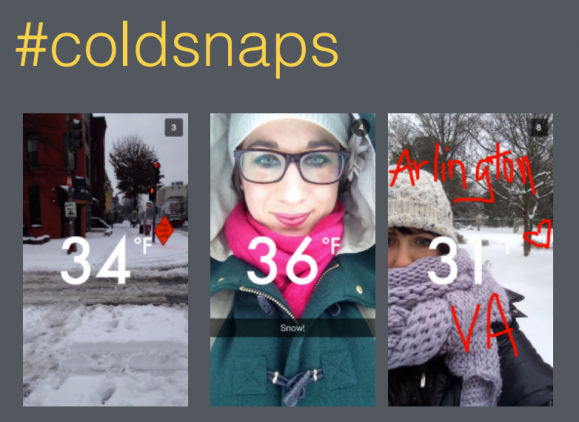Journalists had a lot of questions about Snapchat during a Friday morning hands-on session with Masuma Ahuja of the Washington Post. Ahuja works with the postpolitics account on Snapchat, which she said has been operating since January. Questions during the 2014 Online News Association conference session ranged from how to actually operate Snapchat to its potential value for news organizations.
Here are some of the takeaways for journalists interested in exploring the platform.
A new, invested audience
One of the benefits of Snapchat is the opt-in audience. Users have to seek out a publisher’s account and follow it, which is a bigger investment than subscribing to broadcasted messages via Facebook or Twitter. The audience that takes this step is likely smaller than the general audience – but they really want to hear what you have to say.
“People treat us like their weird friend that cares about politics,” Ahuja said, in describing how users use postpolitics to comment on political news.
Snapchat also represents a huge audience of young people, more than any other social platform.
Community, not clicks
Snapchat is not a publication platform; there’s no functionality to include links or refers to a website. Users have to be connected to each other to see shared content. The benefit of using the platform is that you can engage with an existing community as a brand. Snaps are very personal since snaps go directly to your followers’ phones instead of to a constantly updating feed. There’s a potential for one-on-one engagement between followers and a brand. Ahuja said you should snap back to people who take the time to send you a snap. If you plan to publish snaps on your website or another platform, let people know in the callout or contact them to get permission.
When you join a social community as a publisher, it’s important to be authentic and match the casual atmosphere of Snapchat. Ahuja said postpolitics originally tried to share professional-quality graphics but it didn’t match the general feeling of the app, so they switched to behaving more like a Snapchat user.
Challenges
There are a few challenges to introducing Snapchat as a publisher. There is no direct way to market your account, users must follow your exact handle and there is no search function. It can be a bit awkward to promote a snapchat account through Facebook or Twitter so letting people know about your work is difficult, Ahuja said.
Measuring success on Snapchat is also tough. Metrics are somewhat limited on the platform compared to other social platforms. Account owners have to manually count their users and can’t measure their following as easily as a follower count on Twitter. On Snapchat, you can see when a user opens your snap and how many people view your snap story. Ahuja said she measures success through the number of users who snap back to postpolitics and how many users view an entire snap story.
What to post
With any social platform there’s a question of the best style of post. For Snapchat, Ahuja said bite-sized is best — short snaps or stories that get a message across quickly.
Ahuja shared some examples of postpolitics snaps. Here are a few, as well as examples from other organizations she referenced.
NPR shares a fact on Snapchat every day with a short video of someone from the newsroom.
Mashable uses snap stories to show staff members behind the scenes and tease to content.
Ahuja shared the link to her presentation for more information.
My snapchat presentation from this morning, if you’re looking for it: http://t.co/vPrqCYJyO0 #ONA14 #ona14snaps #onasnaps
— Masuma Ahuja (@masumaahuja) September 26, 2014






